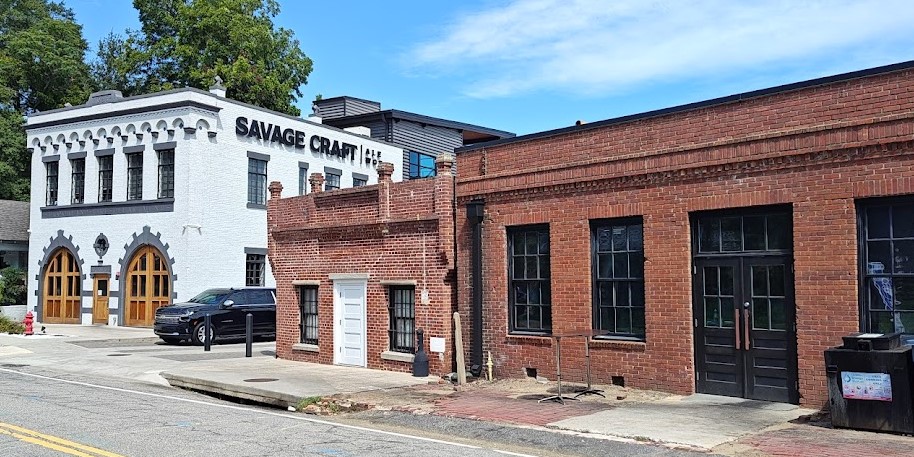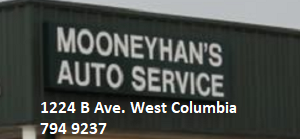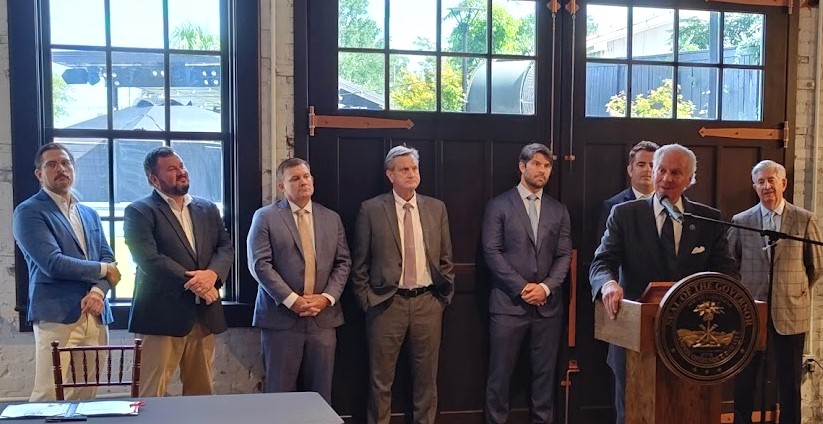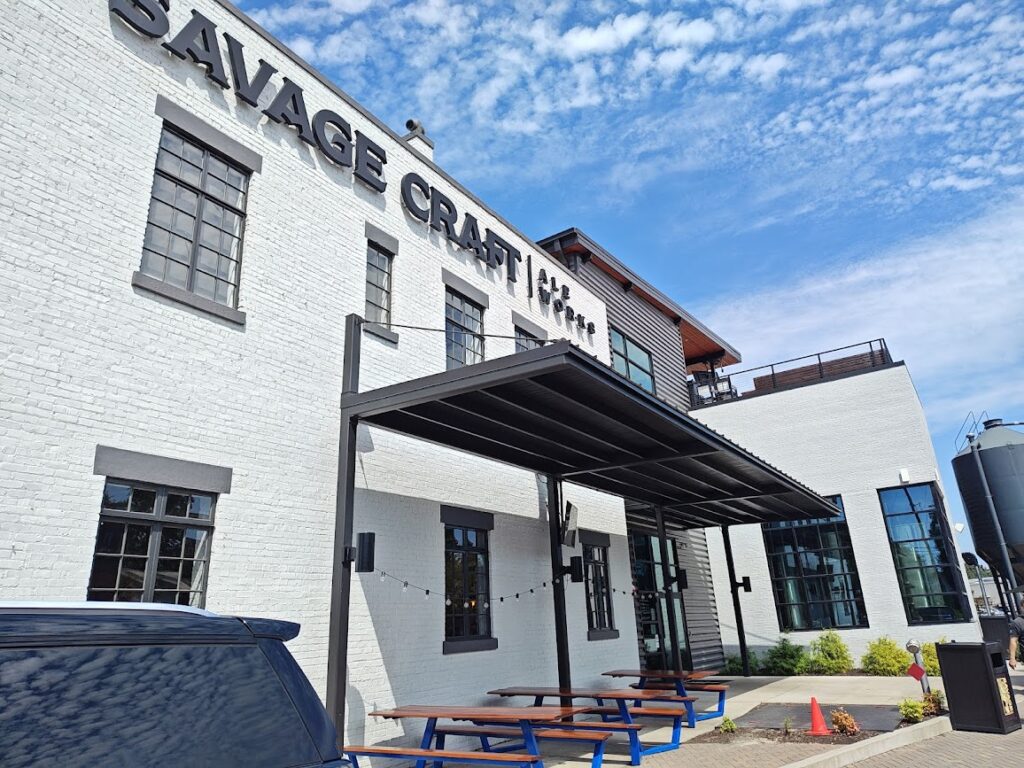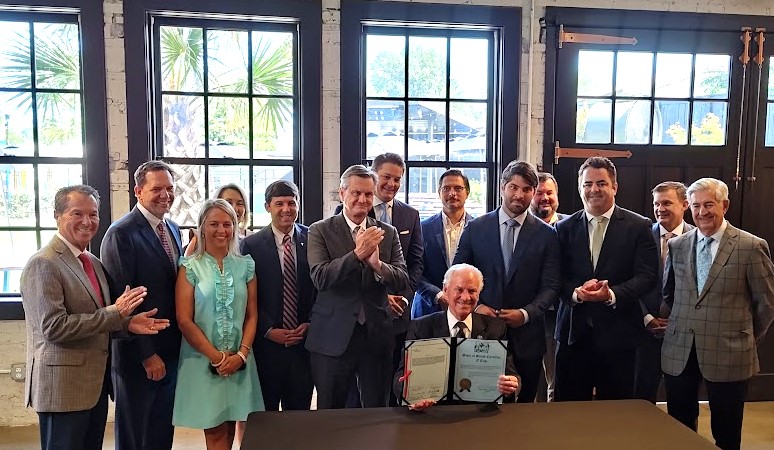
Gov. Henry McMaster at West Columbia’s Savage Craft Ale Works to sign extension of Abandoned Buildings Tax Credit bill
Gov. Henry McMaster was in a historic building on the grounds of Savage Craft Ale Works in West Columbia, Wednesday, for the ceremonial signing of a bill which extends the state’s Abandoned Buildings Tax Credit through 2035. The bill also increases the maximum tax credit that can be earned in a year from $500,000 to $700,000, further incentivizing investment in vacant buildings across South Carolina.
Savage Craft Ale Works main building is housed in the former New Brookland City Hall and Fire Station, that was built in 1926.
In 2019, Andrew Baumgartner and his team, began the process of restoring and repurposing the historic building as a brewery that has since become a landmark business in West Columbia’s River District. He said the Abandoned Buildings Tax Credit made renovation of the building possible. Two other historic buildings on the property, including a former jail, built in 1908, are part of the Savage Craft Ale Works complex. Baumgartner said the brewery draws a clientele from all over the region, and it has returned revenue back to the state treasury in taxes paid that more than cover the amount of the tax credit received.
McMaster was joined by members of the General Assembly and local business leaders. Sen. Nikki Setzler, Rep. Micah Caskey, West Columbia Mayor Tem Miles, Councilman David Moye and Tim James, president of the Cayce-West Columbia Chamber, were on hand for the Governor’s visit. Sen. Tom Davis and Rep. Russell Ott were in attendance, too.
“Tax credits and tax cuts are among the most effective economic development tools we have as a state,” said McMaster. “By providing this tax credit, we encourage developers, business owners, and entrepreneurs to breathe new life into once-neglected properties. This will have a ripple effect in the areas around them, preserving our history, creating new jobs, and helping to bring even more pride to our communities.”
“Every restored building is a step toward a more vibrant, prosperous South Carolina,” said Caskey. “We are taking a proactive stance on safety, ensuring our towns and cities are not just beautiful, but also secure places for our families and businesses.”
The S.C. Abandoned Building Revitalization Act, first enacted in 2013, offers income or property tax credits as an incentive to promote the rehabilitation of empty or underutilized buildings. An abandoned building means that at least 66% of the building has been vacant for at least five years. To qualify, a taxpayer must file a Notice of Intent to rehabilitate with the South Carolina Department of Revenue and incur rehabilitation expenses exceeding either $75,000, $150,000, or $250,000 based on the population of the municipality where the building is located.
“South Carolina is the only state in the nation with an Abandoned Buildings Tax Credit. We care about our history,” said Sen. Tom Davis. “It may be cheaper to bulldoze an old building and ruin its character, but there is a value to rehabilitating and revitalizing.”
Additionally, it creates a new corporate income tax credit for railroads based on qualified railroad reconstruction or replacement expenditures. The credit is worth 50% of the qualified railroad construction or replacement, up to $5,000 per mile of track replaced or repaired.
